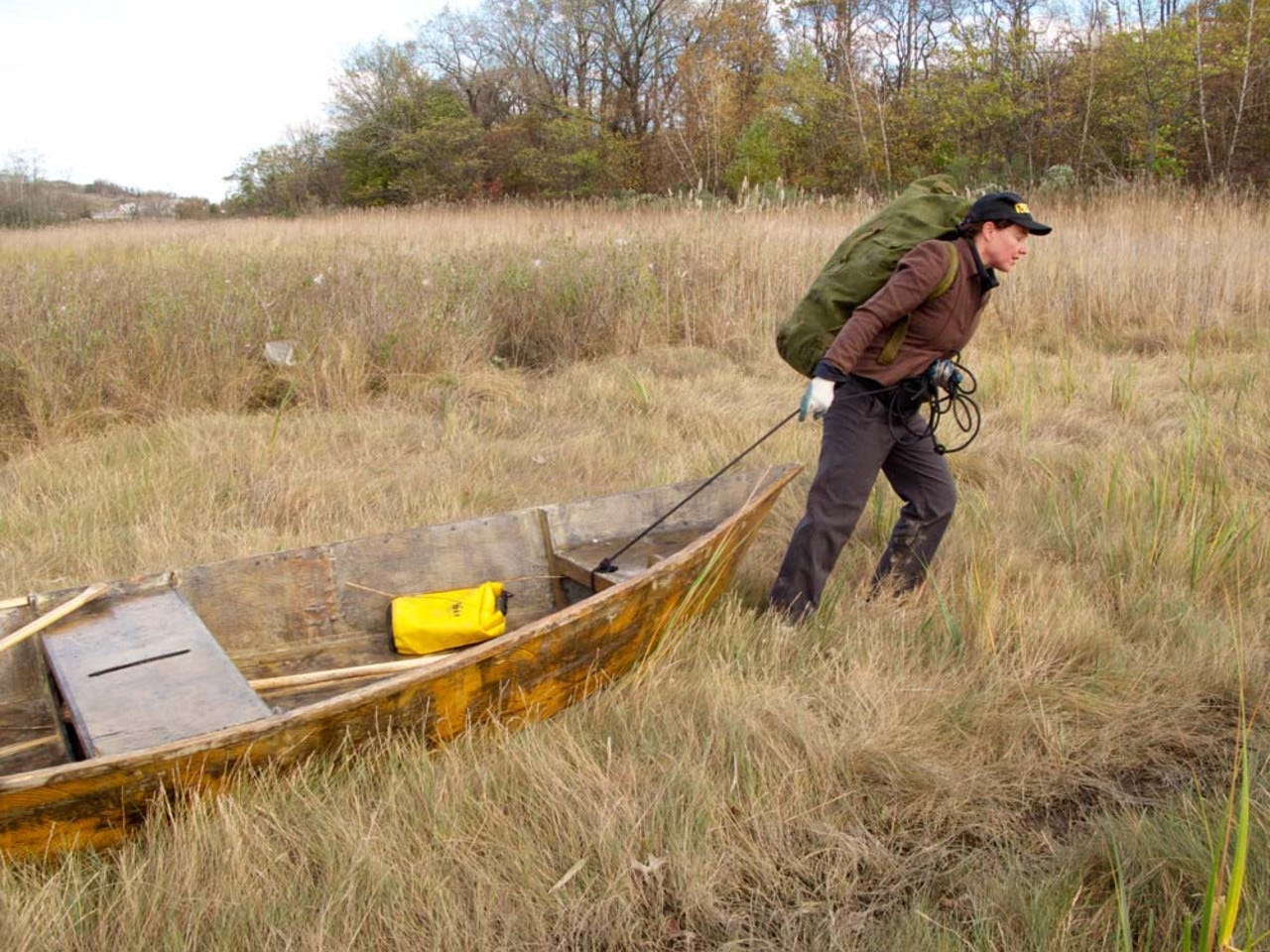Trash Comes Clean
A quest to comprehend the immensity of New York City’s waste takes a writer to the heart of the Fresh Kills landfill.
Salty mud, punctuated by plastic bottles and an oily sheen, sucked at our feet as Marie Lorenz and I walked her rowboat down to the Arthur Kill, a tidal straight separating Staten Island from Jersey. In front of us, about fifty feet from shore, sat the wrecked bodies of a dozen boats dropped in this inlet for metal salvaging in the 1950s. Just beyond them, on the western edge of Staten Island, rose the gentle slopes of Freshkills—their roundness built not by glacial rifts or tectonic plates but by man. The site was once home to the largest landfill in the country, which closed in 2001 after receiving New York City’s trash for over fifty years.
I’m a bit of a Freshkills junkie. I’ve read countless articles about “the fill”—probably the world’s most high profile landfill—perused old maps and project proposals, even trudged through Robert Moses’ bid to turn the then-small, by comparison, Fresh Kills dump into a park in 1951. Despite all my research, I felt that som…


